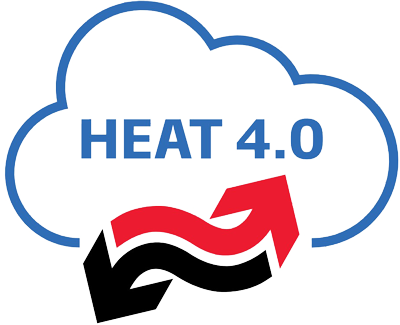Solutions
The HEAT 4.0 consortium utilizes individual software and hardware solutions from partners and adds common components to achieve unique, holistic solutions for district heating operators.
The necessary process is facilitated by an integrator, which can be any partner in the consortium for Danish district heating operators,
and NIRAS for international district heating operators. This includes additional integration with the end-to-end solution by Leanheat/Danfoss.
HEAT 4.0 solutions
A precondition for establishing HEAT 4.0 solutions is the ability of district heating systems to communicate with their surroundings. For this the Industry 4.0 standard OPC-UA is recommended, as a part of the “HEAT 4.0 Ready” labelling. For inter-partner communication, especially the communication between software solutions and the common infrastructure described below, the REST-API interfacing standard is recommended by HEAT 4.0.
Common data sharing and communication platform for integration services. For advanced implementations this solutions is provided by the partner Center Denmark.
Cross System Optimization – A solution for the holistic optimization of the whole district heating across all system components, typically demand side, distribution and production. Also bidding on the electrical markets and sector integration could be included.
Cross Temporal Model Information solution – A methodology to ensure temporal alignment, where models for operation, short-term and long-term planning communicate their predictions and optimization results to improve overall predictions. DTU Compute promotes Frigg.
HEAT 4.0 partner solutions
You find many partner solutions described in the presentations of the individual partners at This link to Partners.
HEAT 4.0 processes
HEAT 4.0 is a complete methodology for the digitalisation of district heating infrastructure. Therefore HEAT 4.0 proposes a consistent process for this digitalisation. Such a process consists of the following main tasks.
1. Enabling data communication and sharing: Preparing the organisation and infrastructure of the district heating client to be ready for digital communication and HEAT 4.0 integration.
2. Setting up an implementation plan.
3. Implementation that is adapted to the individual district heating operator and infrastructure.
